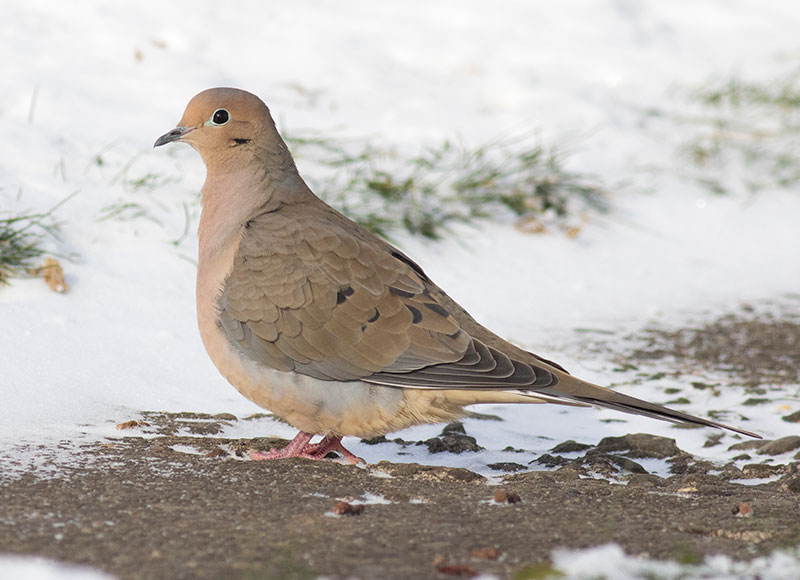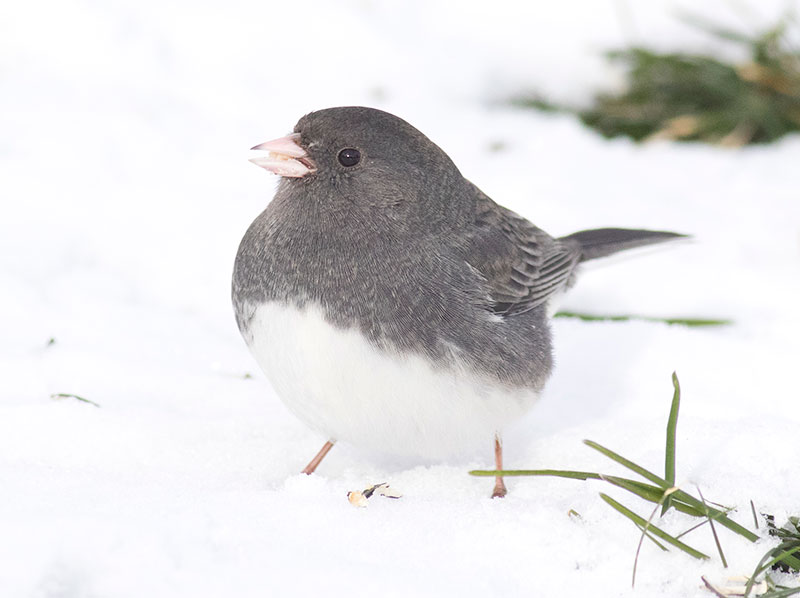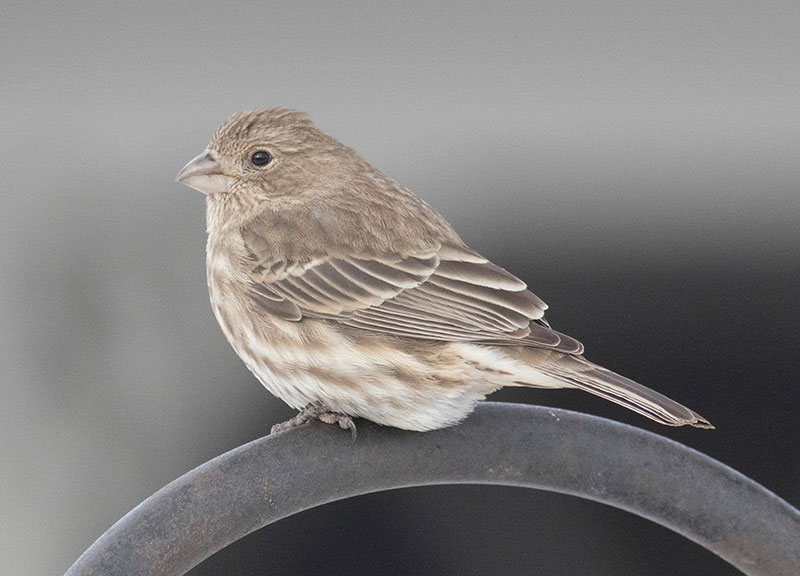Feeder Birds
12/25/16
By David Brown
If you are traveling this Christmas weekend you will likely end up at the home of a friend or family member for a meal. If they have a bird feeder then birds will be showing up for a meal as well.
Recently I spent an hour watching and photographing the birds that came to my feeders. Not only do different species look different but I was able to notice the unique behavior of each.
The blue jays arrived in a loud group. Some ate peanuts and sunflower seeds on the ground while others perched in the tree, perhaps acting as lookouts.
A few mourning doves walked on the ground and pecked at seed. Even without looking I knew when they flew off because their wings whistled.

Mourning Dove
A downy woodpecker hung on the side of the suet cage. The red patch on the back of the head indicated that it was a male.
I first heard the red-bellied woodpecker call from across the street then a minute later she swooped in to eat sunflower seeds. Females have orange on the back of the neck but the top of the head is gray.

Red-bellied Woodpecker
I watched a white-breasted nuthatch perch on a hanging feeder as it blew in the wind. It stayed for a few minutes and left without eating.

White-breasted Nuthatch
Dark-eyed juncos are common winter sparrows having the nickname “snowbirds”. They were hopping around and scratching the ground with their feet to reveal seeds. I also saw a white-throated sparrow feeding on the ground and noted that it was more cautious and stayed closer to cover than the juncos.

Dark-eyed Junco
A bright red male northern cardinal flew in and a moment later he was joined by the dull yellow female. They often visit at dawn and dusk and can be detected by their loud chip note.
The house finch is another species with red males and duller females. I watched a small flock easily crack sunflower seeds with their thick beaks.

House Finch
A black-capped chickadee landed on the feeder, grabbed a seed with its small beak and flew to the safety of a tree branch where it held the seed with its feet and pecked to crack it open. Its larger relative the tufted titmouse feeds in the same manner.
A flock of forty house sparrows landed on the ground. This invasive species often aggressively takes over bluebird boxes. Every time a car passed the whole flock flew to a nearby bush but were back within twenty seconds.
A flock of one hundred European starlings flew over and a few broke off from the group to land. This is another invasive species that competes with native birds for nest cavities. In fall and winter starlings have a beautiful speckled appearance. By summer the feather tips wear off leaving them with a shiny iridescent breeding plumage.
As you travel this holiday season see how many bird species you can find and take a moment to watch how each behaves.